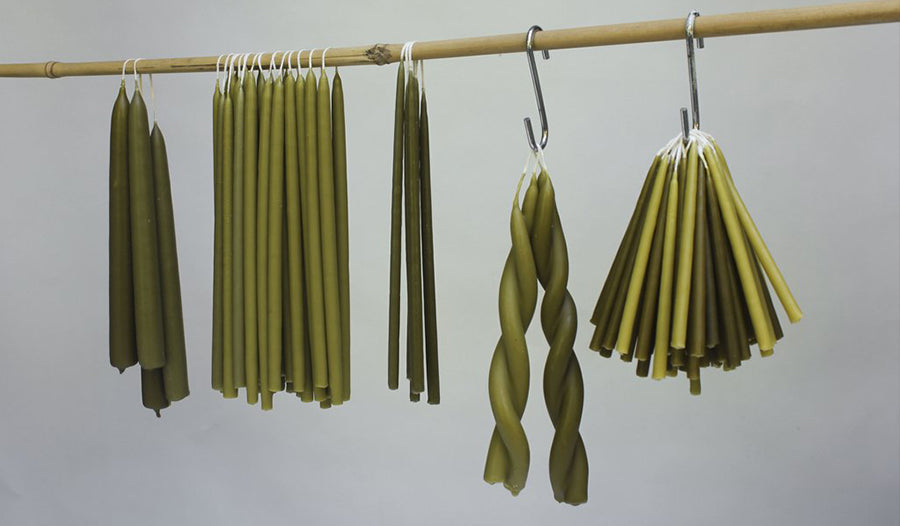
WINTER SOLSTICE

The December solstice occurs when the sun reaches its most southerly position on December 21st. It signifies the turning point in the calender, as it marks the shortest day, with just under eight hours of daylight in London, fewer if you are further north. The solstice has played an important role in cultures worldwide from ancient times, with many seasonal celebrations including Christmas closely linked to its observance.
The tradition of lighting fires signifies the rebirth of the sun. In fact it is thought that the word Yule comes from the Anglo-Saxon word for the festival of the Winter Solstice, 'Iul' meaning 'wheel', making a connection to the Celtic calendar, the Wheel of the Year. Burning candles can be a great way to celebrate the solstice and lighten a dark day.

In particular, Wax Atelier, based in East London produce beautiful and rustic hand dipped candles, revisiting traditional techniques using natural wax. For designers Lola Lely and Yesenia Thibault-Picazo, making becomes a tool to experience the interconnection between the natural world and material culture.
Having both used in wax in their own work in different ways, Lola and Yesenia reached out to scientists working with wax and visited artisans practicing traditional wax crafts to fully grasp the versatility and potential of the material. Among the many types and variations, their research led them to beeswax and traditional candle making, and slowly Wax Atelier began to take its shape.

From the wax of boiled cinnamon used in temples in India, to the burning of tallow to light the streets of London, candle making itself has a long, varied and undefined history.
“We’ve looked as far back as The Egyptians, where plant matter and paper were used to create wicks. The fat of animals and whales were used for candles at one point, which would have been fairly horrible to work with, but it created light. Dipping candles in beeswax came in the middle ages. The material was regarded as noble, and reserved only for the churches and the wealthy. It was very rare, but it was loved as the scent was clean, and the light was clear and bright. With the birth of the Industrial Revolution, the time consuming process of dipping gave way to the quicker mass process of pouring and moulds, and it wasn't long before cheaper and more accessible materials followed too." - Yesenia.

The candles made at Wax Atelier go back to the ancient art of candle making. A simple method - a cotton wick and thread are dipped into beeswax, pulled out, cooled, before the process is repeated again. Lola says, “It’s slow and ancient, but the result is very unique, and the light feels primeval.”

Each batch of candles can go through anywhere between eight to 20 dips, depending on Lola and Yesenia’s desired shape, width and length. “Beeswax is precious and beautiful to work with, it has many unrivalled properties,” Lola says. “But we want to use it in a sustainable way so that we don’t overuse it.” Green tea wax, the wax of rose and beeswax infused with madder pigments are blends that are a result of Lola and Yesenia’s extensive research and development. The resulting palette is soft and tonal - each with its own unique scent. “The final colour can sometimes be a happy accident,” Yesenia follows. “We blend the beeswax with plant wax, utilising the inherent qualities of each. For us, it is about awareness and limitations of materials combined with availability.” Any wax left over on apparatus in the workshop simply gets scraped off and melted back down, making the process a resourceful one.
Today, the shortest day of the year, why not light a candle and celebrate the return of light.
--
All images courtest of Wax Atelier. Extracts of the interview with Lola Lely and Yesenia Thibault-Picaz are from the Toast Magazine article, A Natural Colour Story with Wax Atelier.
Find out more about Wax Atelier on their website: https://www.waxatelier.com/
